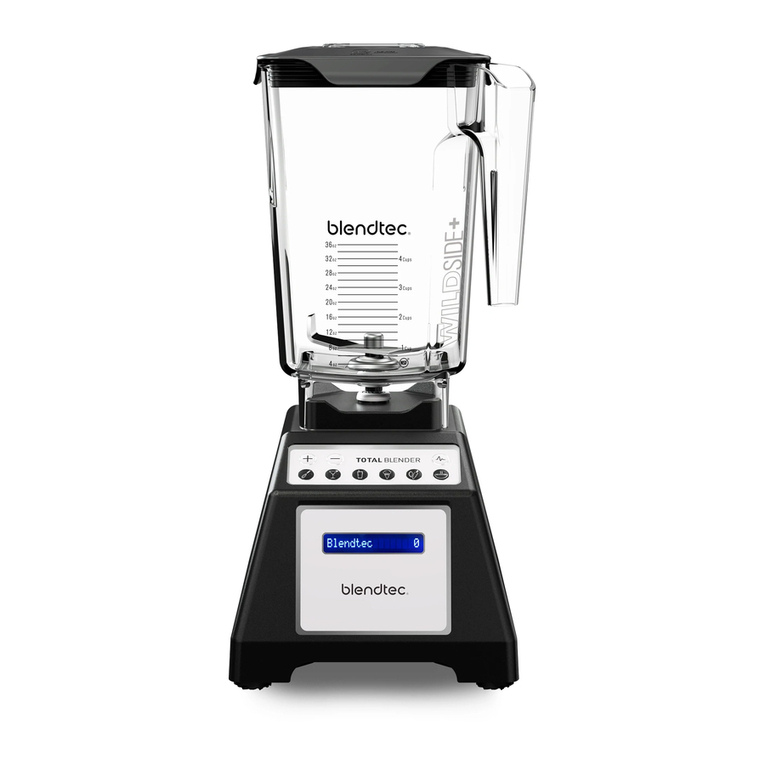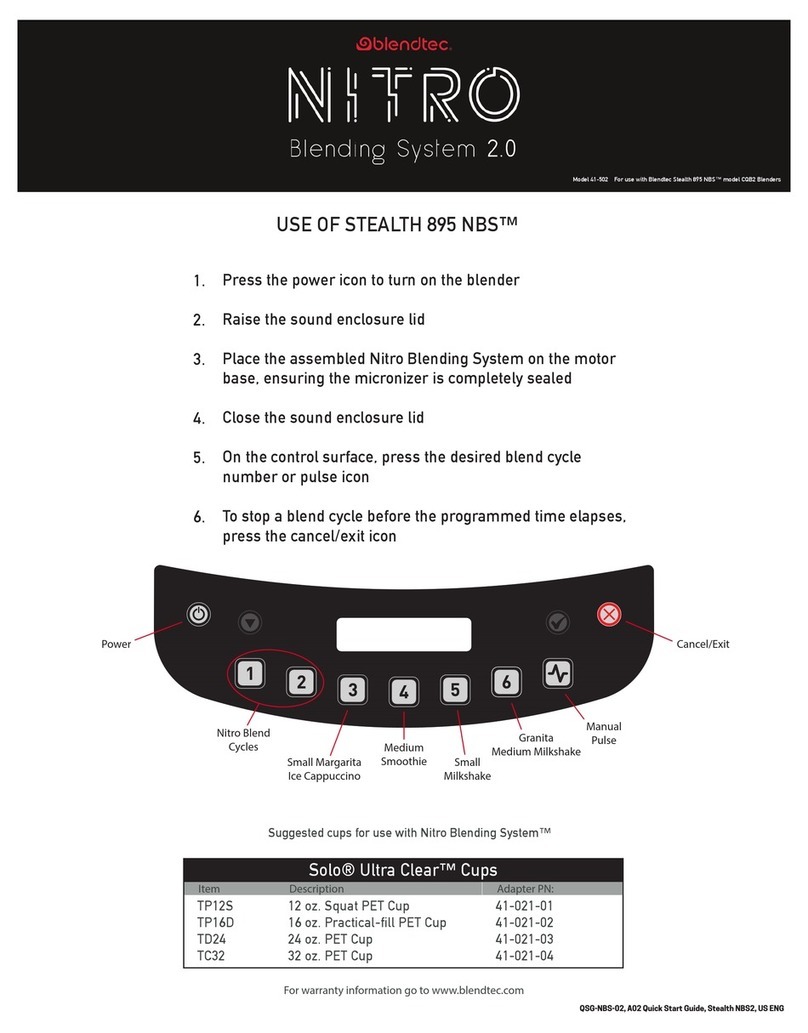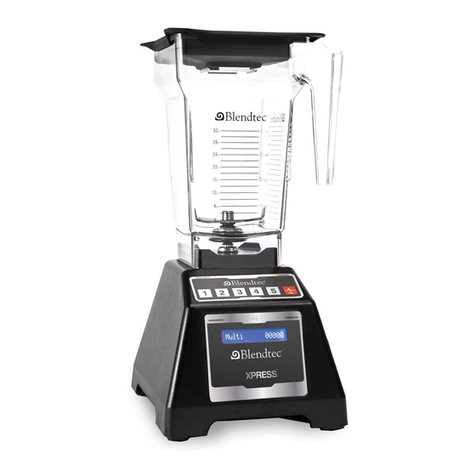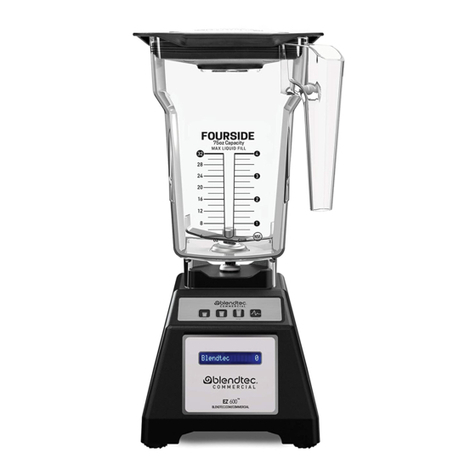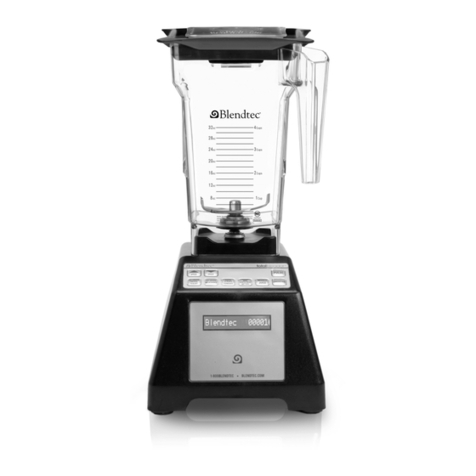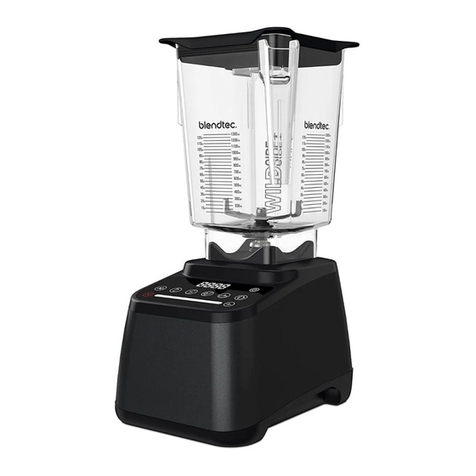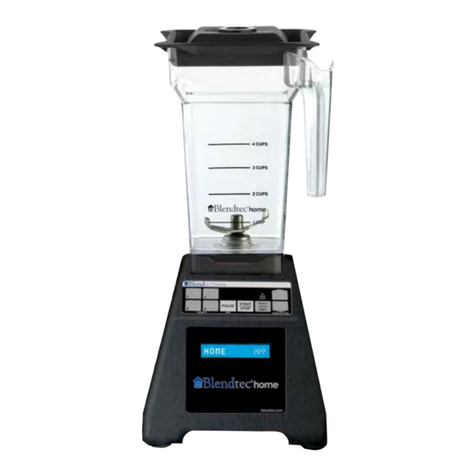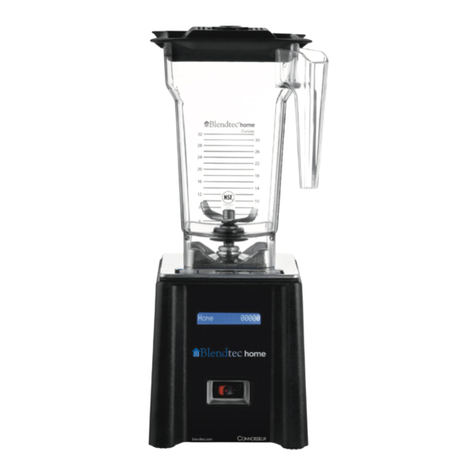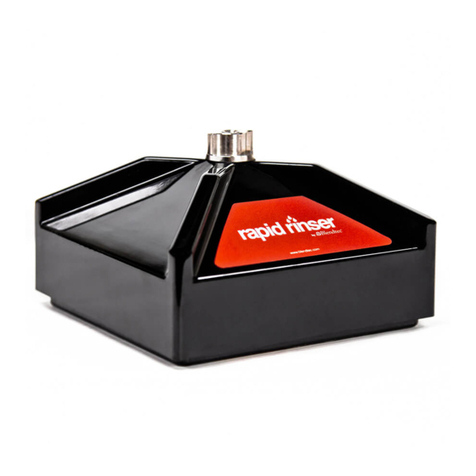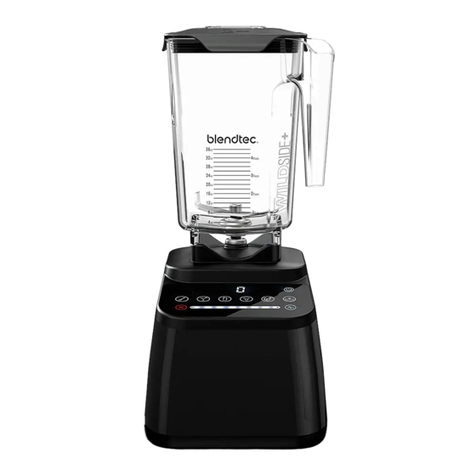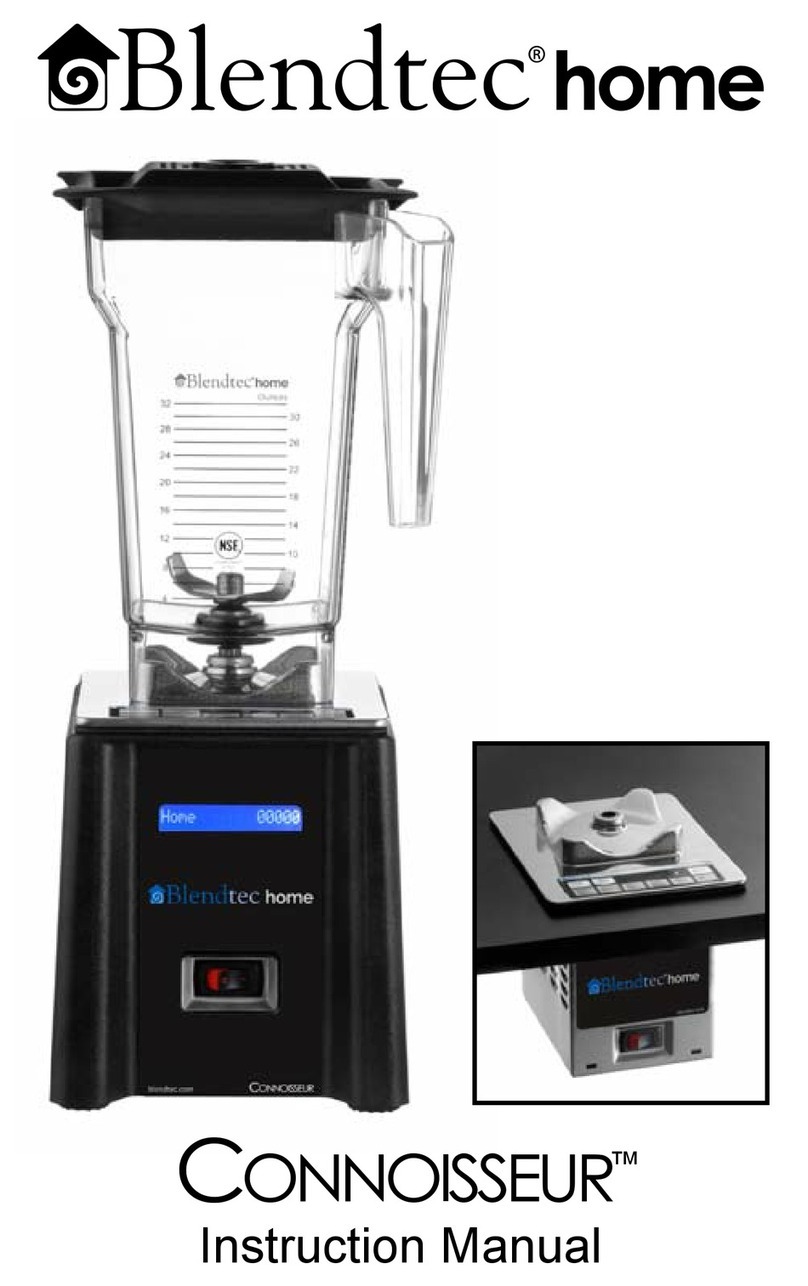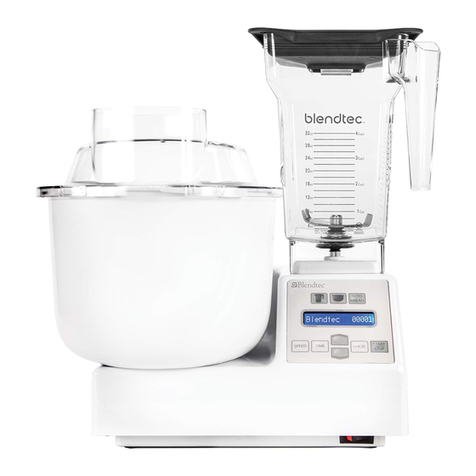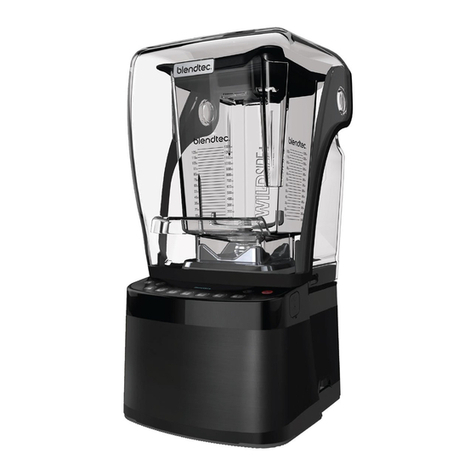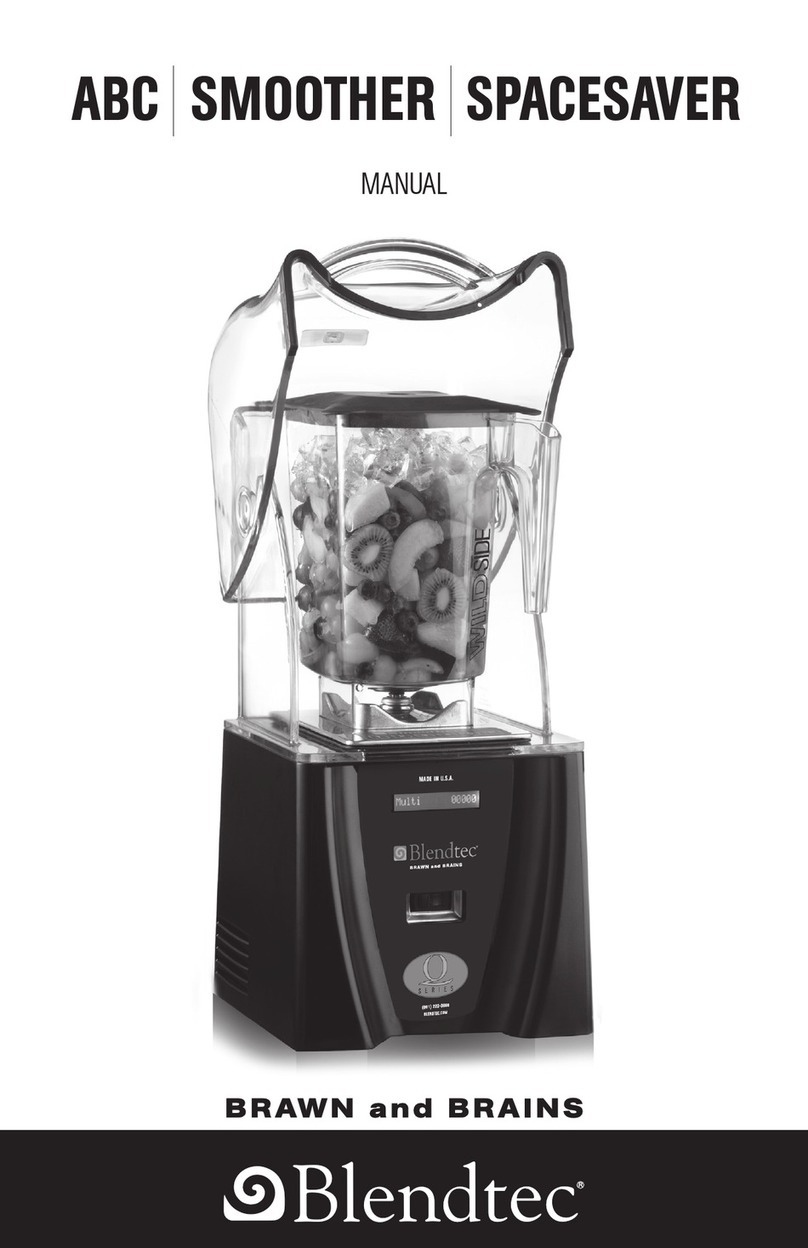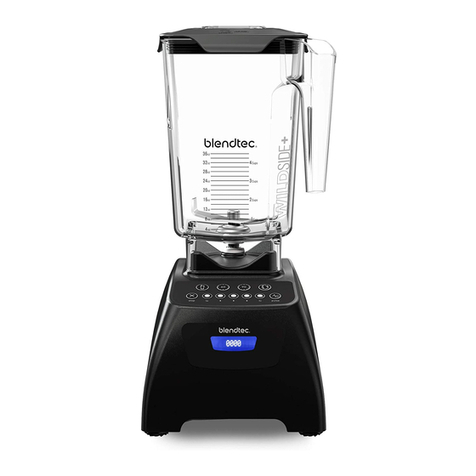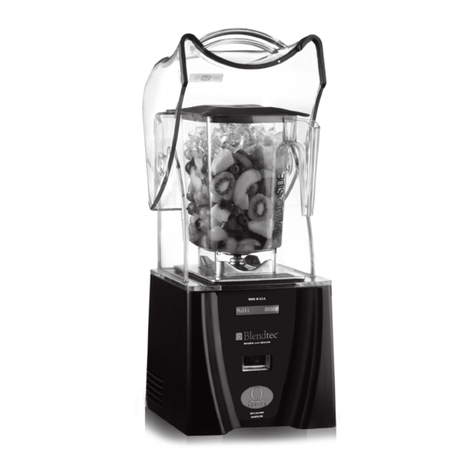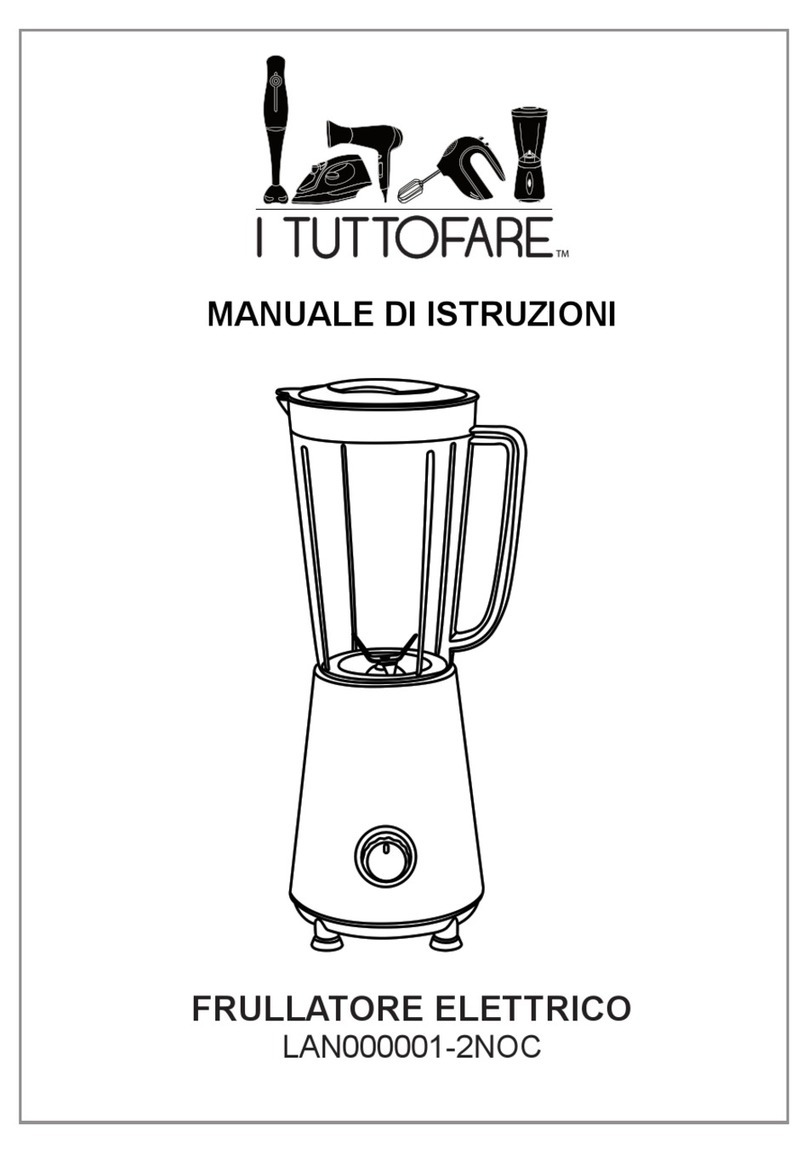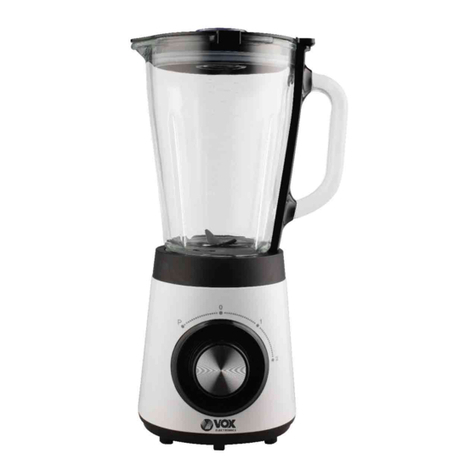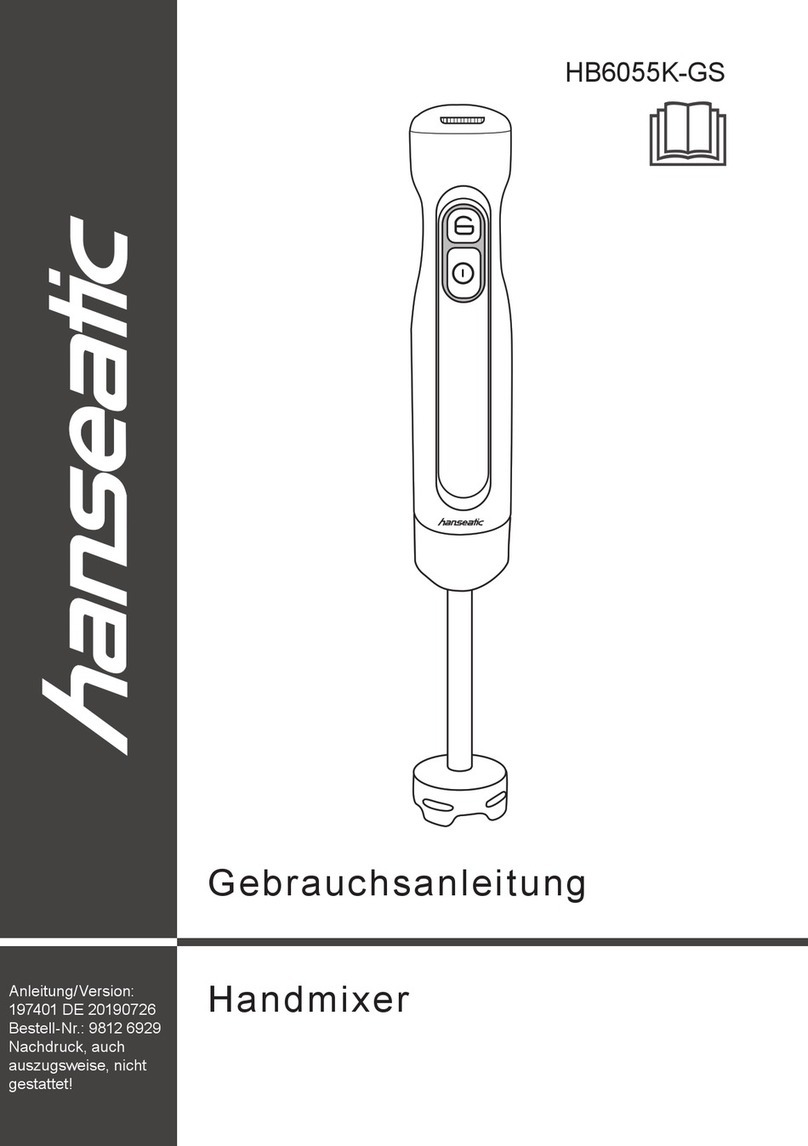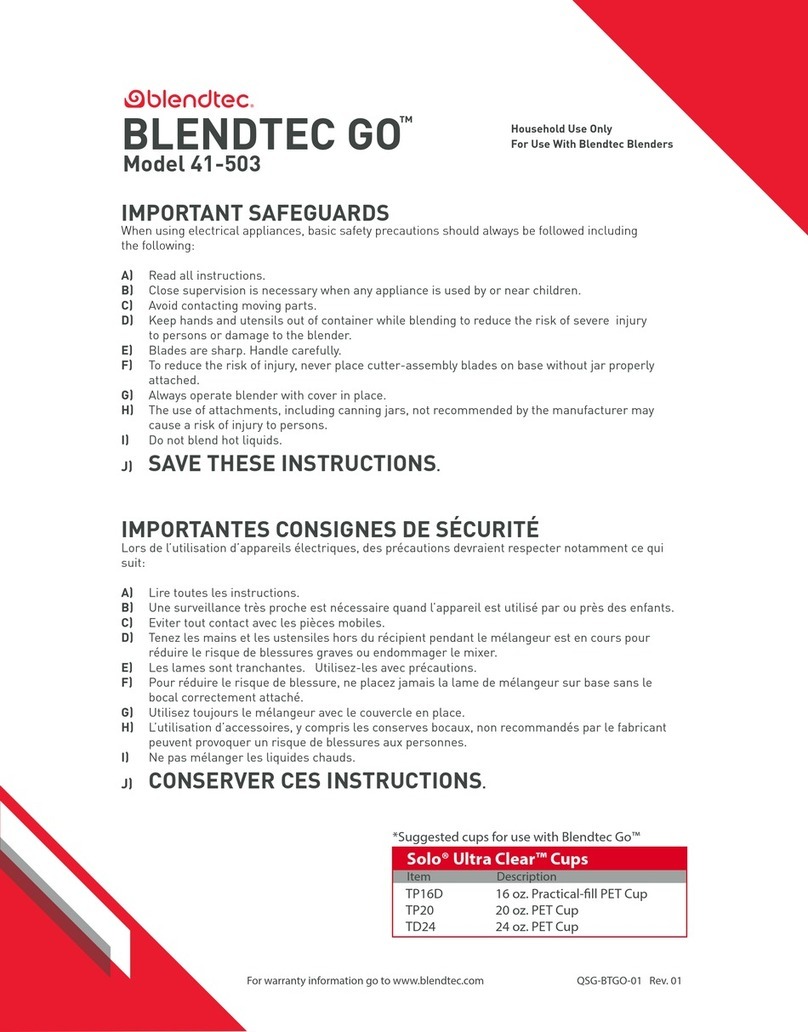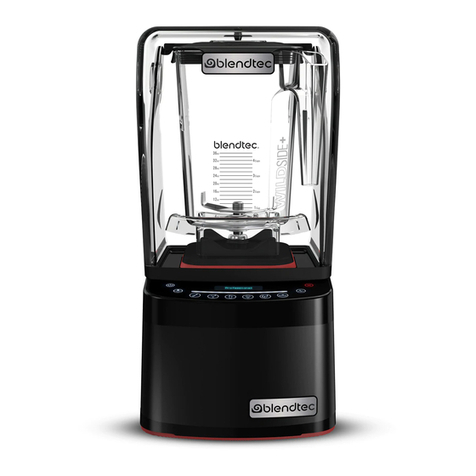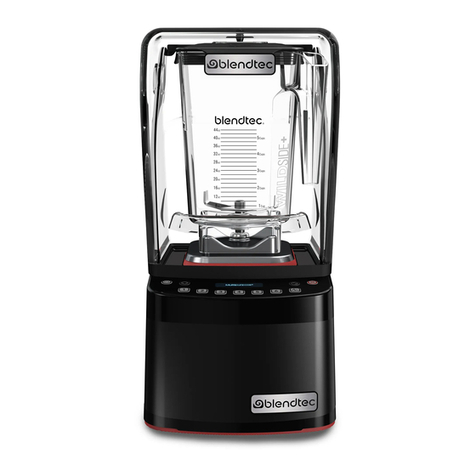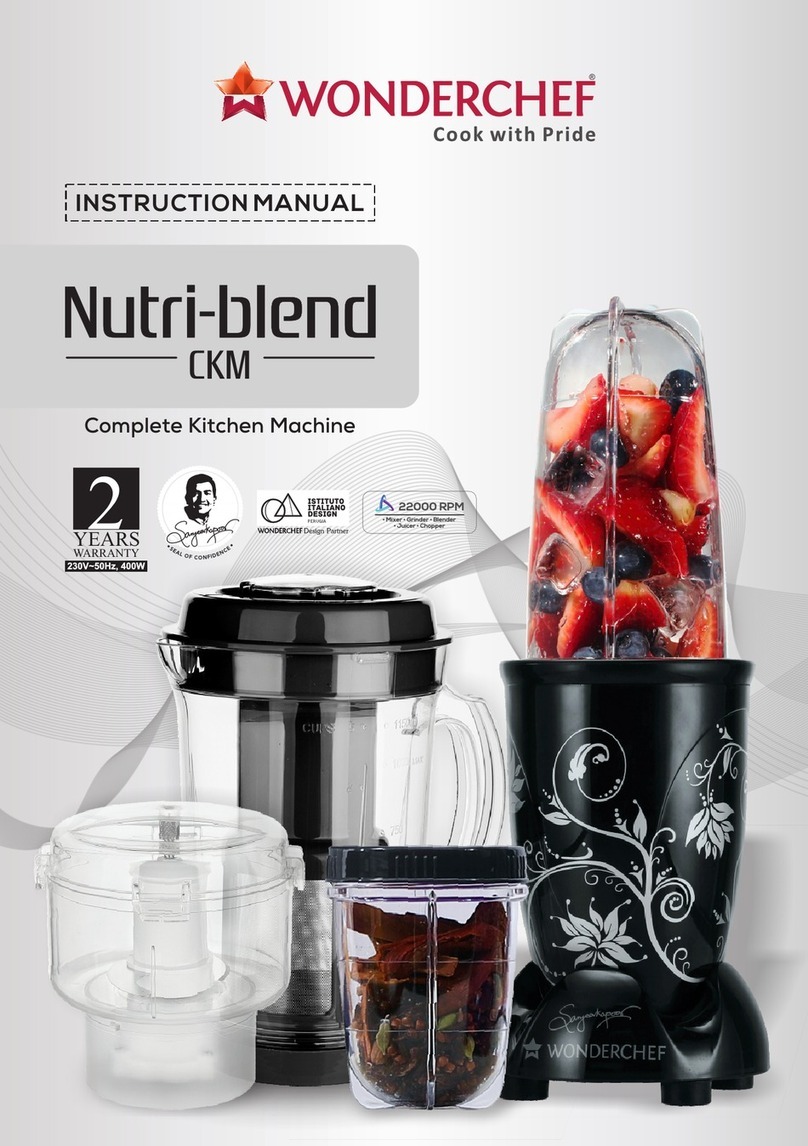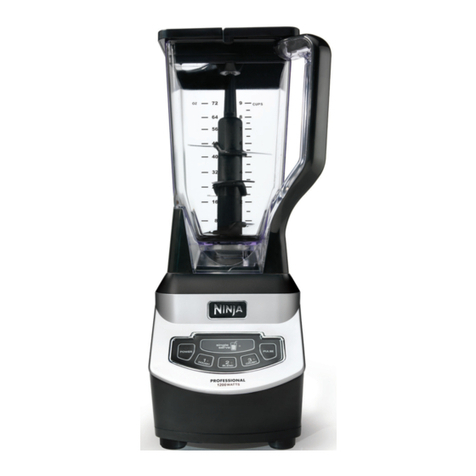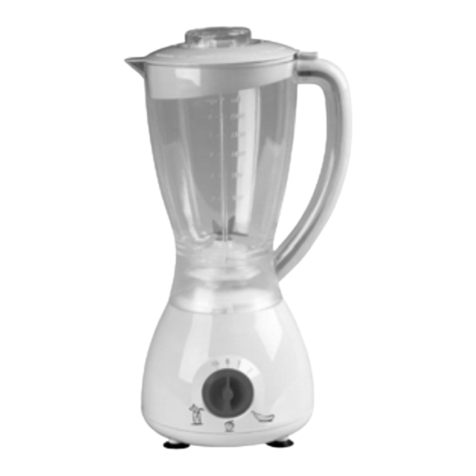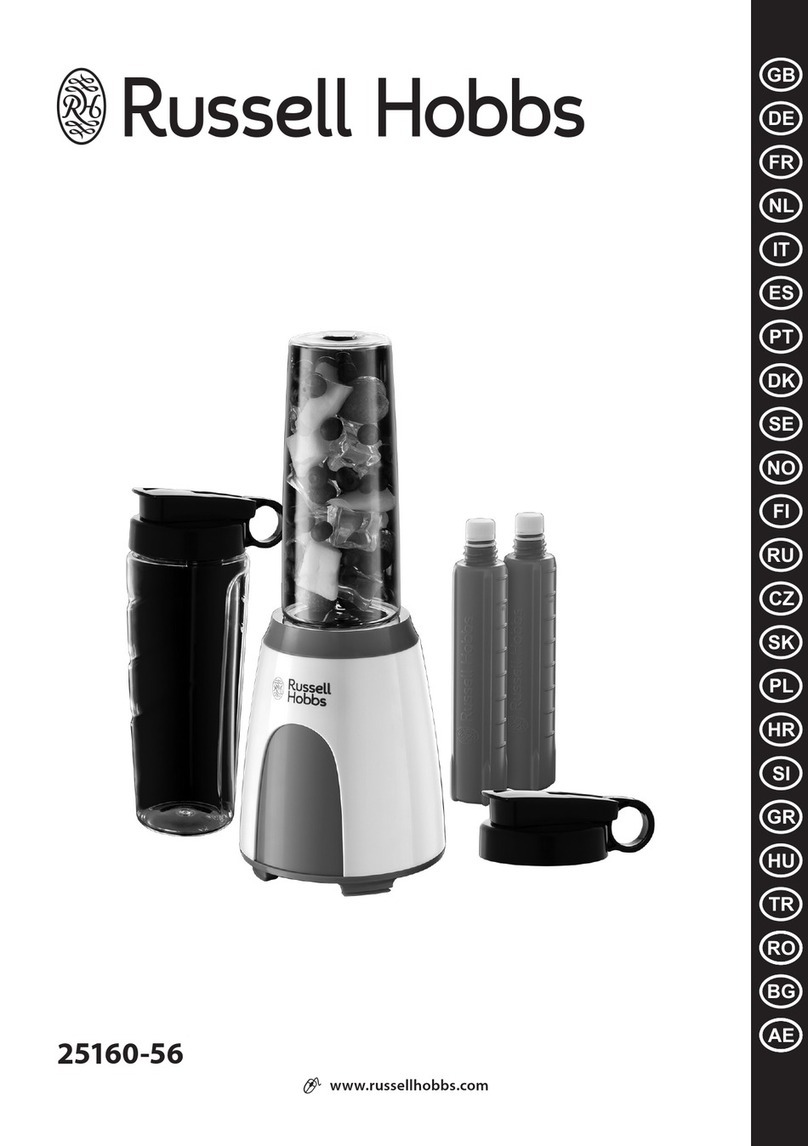
12
1. Determine the concentration ratio of your flavor ingredients to ice and
water. In other words, what’s your ideal recipe? What does your product sup-
plier recommend will be the proper amount of juice concentrate or puree,
and how much will be ice and water for a given drink size? For example, in
a 12 ounce drink, some recipes call for 5, others 4, 3, or even just 2 ounces
of flavored product. These concentration values would be 1.4, 2, 3, and 5
to 1, respectively, where the 1 is the product, and the 5, 3, 2 and 1.4 values
represent the relative amounts of ice/water needed to make the desired
12 ounce drink. So if the recipe called for 2 ounces of product, you need to
put in 10 ounces of ice/water (5 to 1 ratio). If the recipe called for 3 ounces
of product, you would need to put in 9 ounces of ice/water (3 to 1 ratio) to
make a 12 ounce drink.
2. Determine the water to ice ratio necessary to bring the final drink to 29
degrees Fahrenheit. If I had a 3 to 1 flavor concentrate, then I will need to put
in 9 ounces of some combination of ice and water into my 12 ounce drink.
If I put in all ice I run the risk of freezing the drink and failing to blend (aka
cavitation). If I put in all water, I am guaranteed to lose a customer. So the
ice/water ratio is like a teeter-totter. I have to put in 9 ounces total; the only
question is how much of this will be ice, and how much will be water? It is
recommended that you begin with approximately a 4 to 1 ratio of ice to water
to start with. In the present case, try 7 ounces of ice to 2 ounces of water. If
the drink is a little too runny, go to 8 ounces ice and 1 ounce water. If it is ini-
tially too thick, go to 6 ounces ice and 3 ounces water. You get the idea. The
two values have to add up to 9 ounces, so adjust according to preference.
And with the BD8, you do not need to experiment with only whole numbers of
ounces as the computer allows dispensing in tenths of seconds!
3. Determine the desired texture of the finished drink. The same ingredients
(syrup, water, and ice) can be blended slowly to achieve a nice, crunchy
Italian ice, while a more aggressive blend will turn them into a velvet smooth
granita. It’s your choice.
4. Now for a little fine print. First, different ingredients have inherent thickness
differences within and between flavors. For instance, think of the difference in
thickness there is between strawberry juice, strawberry syrup, and a straw-
berry puree with lots of pulp and seeds. The first two will be on the thinner
side, the puree on the thicker side. Now play the same game with fruits hav-
ing more fiber such as pineapple or mango. You can see that different types
of products (juice, syrup, puree) and different flavors (e.g., apple, mango)
have different levels of thickness and fiber. The thicker the ingredients, the
tougher the blend. Second, be aware of the brix factor. Sweeter liquids have
higher dissolved sugar ratios (solids in water). A 100 gram liquid with a brix
level of 10 degrees has 10 grams of sugar combined with 90 grams of water.
A 100 gram liquid with a brix level of 25 degrees has 25 grams of sugar
combined with 75 grams of water. The higher the solids to water ratio, the
more difficult to blend. Third, what is the temperature of your ingredients, all
of them? The warmer the flavor product, water, or ice, the thinner the result-




















